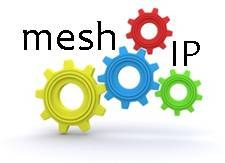 Businesses must ensure that cloud-enabled applications are tuned for optimal performance by paying close attention to network latency and other details of cloud architecture.
Businesses must ensure that cloud-enabled applications are tuned for optimal performance by paying close attention to network latency and other details of cloud architecture.
I recently participated in a lively debate that revolved around three primary economic justifications for cloud computing: cost, revenue, and risk. But, there’s a fourth that Web 2.0 firms know all about—the total customer experience.
The topic came up at the Cloud Connect conference in Santa Clara, Calif., where I had the privilege of chairing the cloud economics track and engaging experts in cloudonomics, including Will Forrest, principal at McKinsey & Co.; Microsoft’s Rolf Harm; James Staten with Forrester Research; Randy Bias, CEO and Founder of Cloudscaling; and Ravi Rajagopal, VP at CA Technologies and adjunct professor at NYU.
Cost savings are the result of total cost reduction, typically through a mix of enterprise data centers and cloud services. Revenue growth occurs via IT resource elasticity that enhances the ability to serve all (revenue-producing) customer demand. And risk can be reduced by the ability to scale up and down based on random variation, cyclical factors, or macroeconomic considerations.
What about the customer experience? Today’s devices, whether mobile or wired, take advantage of an unprecedented rate of technology enhancement: longer battery life, stunning displays, faster processors, and components that add features and functions, such as cameras, accelerometers, and touch screens. This is driving an accelerating wave of innovation in apps for businesses and consumers.
Increasingly, the endpoint application interacts with cloud-based servers. Online games tie game consoles to game servers. CRM data presented or collected at the device is maintained in the cloud. Social network interactions are mediated by the cloud. And search results are determined in the cloud and delivered to the device.
The dilemma is that users want results more quickly, but behind-the-scenes network and processing tasks are becoming increasingly complex. Consider search results. It used to be that you would submit a query and a few seconds later a results page would load. Next, services evolved that gave you search term suggestions with every letter typed. Then, the search results themselves became instantly available. The latest technology will return full pages as you type in each letter of a URL.
If you type sixty words per minute, that works out to one word per second, or one to two hundred milliseconds per letter. For such services to be effective, less time than that must be spent in the trip from the keyboard across the network to the remote servers, the processing at those servers, and the return of results back to the display, including tasks such as page rendering, context switching, and traversing the network stack.
Next generation apps are likely to have an even higher ratio of time available to task complexity. For example, emerging augmented reality functionality on mobile devices may require not just sending a keystroke, but a high-def image from a panning mobile device to servers that use advanced algorithms to process live image data synchronously, then return text or graphics information for compositing with the image.
Moreover, today’s devices often have high engagement due to their ability to simulate physical phenomena, making the experience more immersive, and directly tying to human’s ability to compensate for slow reflex arcs in the somatic nervous system by projecting trajectories—to, in effect, skate not to where the puck is, but where it will be. What will happen when you play air hockey on your table with someone in another city? Tens of milliseconds of reaction time must be realized over network connections that can take up to 160 milliseconds (New York to Hong Kong), driving the need for dispersed processing.
In the real world, we take this for granted. A gas station on every corner means that we don’t need to drive to Alaska or the Middle East to fill up. In other words, to enhance the customer experience, a distributed architecture for at least the front-end customer interface is necessary. Sure, the gas may be refined in Louisiana, but at the moment of truth in the service interaction, the vendor must have a point of presence near the customer. We know that time is money. A large retailer found that 100 milliseconds of extra delay could have a “substantial revenue” impact, while a search provider discovered that delaying search results by 500 milliseconds (from 400 MS to 900 MS) reduced page views and therefore revenue by 20%.
Often in this world, you get what you pay for, but in the world of applications and the cloud, things are more complex. Sometimes you get what you pay for, sometimes incremental improvements are extremely costly, and sometimes there is such a thing as a free lunch. For example, an investment in performance tuning means that it can take fewer resources to reach higher performance levels. By not wasting cycles in poorly written code, not only does the application run faster, but it takes fewer resources—servers, storage, networks—to deliver that faster response time.
The cloud also offers compelling economics for parallelization. Suppose that you just got married, and wanted to get 100 couples—your guests—from the wedding to a reception elsewhere. You could use one vehicle that made 100 round trips, substantially delaying the champagne toast, or 100 vehicles that each made just 1 trip, or something in between. Obviously, using 100 vehicles in parallel will reduce the time between “I do” and noshing on hors d’oeuvres. If you had to buy the vehicles, there would be a serious difference between laying out the cash for one car versus 100. But with taxicabs—a pay-per-use model—the cost for 100 cab rides is exactly the same regardless of which strategy we use. I called this my 7th Law of Cloudonomics: Space-Time is a Continuum. This is critically important. With the cloud, we can get whatever degree of speed-up we want—subject to the inherent parallelism of the application—without paying a penny more.
Finally, (per my 8th Law of Cloudonomics) since the area that a circle covers is proportional to its radius, to reduce latency by half requires not twice as many service nodes, but four times as many. As applications increase in interactivity, and given that user experience continues to be an important factor in the success of any business, the need for a distributed footprint is apparent. However, it’s too costly to keep building more locations to keep enhancing performance, so leveraging the footprint that hosting, content delivery, and cloud providers offer maximizes cost effectiveness.
There are three rules to keep in mind when it comes to enhancing users’ experience via the cloud:
1) tune your application;
2) maximize parallelism for performance enhancement at zero marginal cost via the pay-per-use model;
3) use the cloud’s geographically-dispersed footprint to reduce network latency between the endpoint and the non-device-resident front-end of your application.
- The Customer Edge Drives the Need for NaaS - June 25, 2023
- Blockchain Evolves And Secures - January 13, 2019
- Bessemer Ventures’ 2018 Cloud Computing Trends - February 25, 2018




